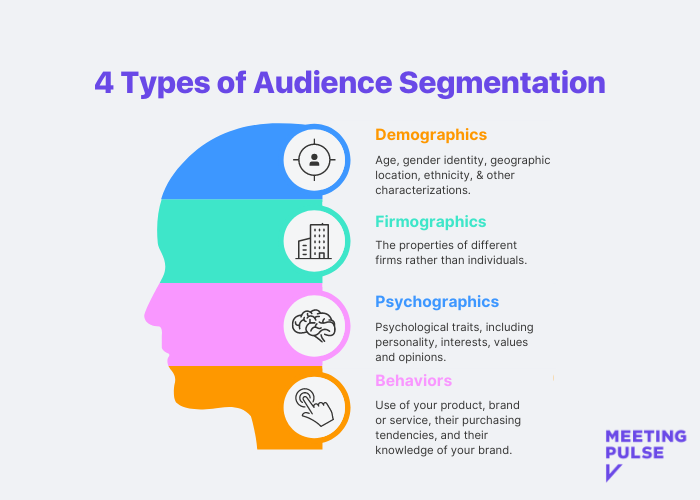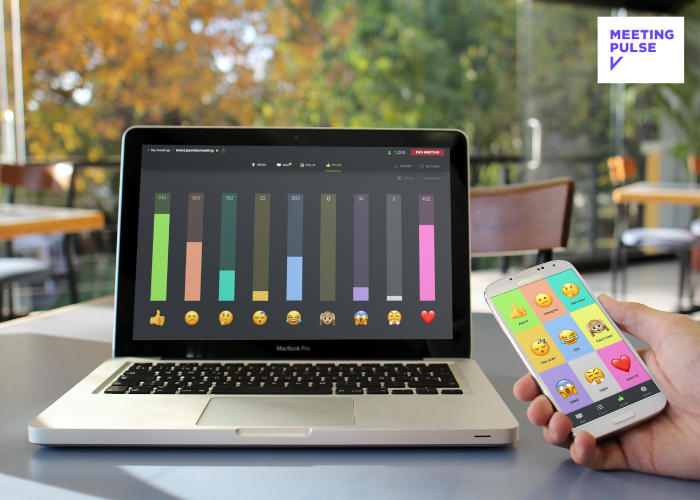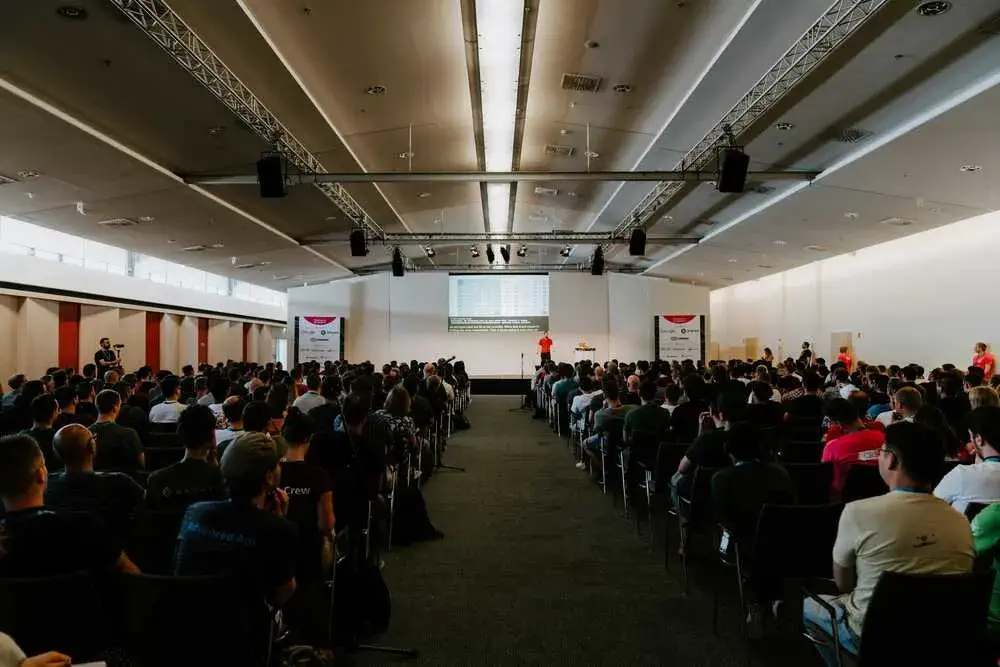If you’ve ever tried to reach a specific demographic within your target audience with highly personalized content, you’ve employed a marketing strategy called audience segmentation.
Audience-segmentation strategy is the practice of splitting your audiences into smaller groups — or audience segments. The divisions are based on factors like age, geographic location, ethnicity, behavior, product usage, and their point in the customer journey.
By segmenting your audience and using tailored messaging in your marketing efforts, you’re far more likely to form messages that will motivate or engage key segments than if you create content that is aimed at reaching a much broader audience range. Why? The broad message tends to be too generic. Beyond that, the message must also be transmitted through the channels that each segment uses.
Audience segmentation can be applied in different ways by using insights about each unique subgroup. Not only can the strategy be applied to event marketing, but also in how events can be run.
What is the purpose of audience segmentation?
When you analyze your audience and break it down into logical subsets, you can understand your customer base and the specific needs — or interests — of each segment.
The strategy enables you to identify your target audiences, tailor your messaging to each segment, meet a specific need to boost conversion rates, create a stronger connection with customers that fosters loyalty and brand trust, and ultimately, attract leads to advance your sales cycle.
The process generally begins with audience-based research aimed at understanding audience profiles. Doing such research will help determine segmentation and identify related pain points for each group. Once you understand who you’re trying to reach, you can tailor your messaging to better reach each segment.
What is an example of a segmented audience?
In this section, we’ll use event marketing to show how to apply audience segmentation.
When you plan an event, understanding the goals for it is crucial to providing an ideal event experience. Is the goal sales, lead generation, networking, education? Chances are, different event attendees will have different goals in mind.
Knowing this, the first step is to research your market and potential attendees. You can do this in a number of ways, including distributing pre-event surveys that will give you important insights while generating excitement about the event. Use data you have from your last event to identify repeat attendees, and any insights you obtain from analyzing registered attendees. You can also set up marketing pixels on your event website to gather data on visitors, and research similar events in your industry to get an idea of its event audience and identify potential event attendees.
Once you’ve done all the research, use the gathered information to segment your audience. Segmentation types can be defined in a number of ways, including:
- Demographics. Groups defined by age, gender identity, geographic location, ethnicity, nationality, education and other similar characterizations.
- Firmographics. This is useful for B2B companies as they look at the properties of different firms rather than individuals.
- Psychographics. This includes psychological traits, including personality, interests, values and opinions.
- Behaviors. Behavioral segmentation focuses on how customers interact with your business or, in the example we used above, your event page. You could evaluate their attitude toward or use of your product, brand or service, their purchasing tendencies, and their knowledge of your brand.

Now it’s time to create messaging to reach specific audience segments that interact with your event website. Here are examples you can use in your event’s marketing to reach key groups at just the right time.
- Sponsors and VIP attendees. This group will expect to receive all of the general information you provide about your event, and just a little bit extra. Consider messaging that conveys the value of attending, and what they (or their organizations) stand to gain in exchange for their time.
- Registered attendees. As the event takes shape, this group will expect information about new sessions or speakers that have been added to the calendar, resources and tools they’ll have access to, where to find related social media pages, or ways they can engage before the big day. You can also send messaging to encourage them to download and get familiar with any event apps or platforms and create their user profiles in advance.
- Speakers. This segment will appreciate any information about deadlines for submitting presentations, information on sessions they’ll be participating in, and timelines to help them prepare and arrive ready to go.
- Potential attendees. Unfortunately, not everyone who visits your site will register right away. That’s OK! Send this group a message reminding them to sign up, and include some big highlights and other general information to help them make their decision.
- Repeat attendees. This is your most loyal group. Reward them! Consider building a perks program to keep them coming back. Offer exclusives like early access, VIP upgrades or a price break on registration.
Relating to an audience according to segmentation
In this section, we will look at four ways to use segmentation to interact with the audience during your event. Tools — such as the ones MeetingPulse provides — help to do just that.
- If you’re interested in surveying attendees but don’t want to distribute the same list of questions to your entire audience, you can use conditional audience polling to send relevant questions to specific segments of your audience. This works by showing attendees questions that are relevant to the answers they’ve already provided.
- You can send a tailored message, a link, or other information to a specific audience segment by using personalized data inside of link markup. This will ensure that only attendees in the identified segment receive the message.
- You can segment the results of any live polls, quizzes, and live surveys you distribute according to custom data by an audience segment or specific poll answers. This can give you better insight into a segment’s attitude by linking their answers to outcomes.
- If the results of polling identify a specific response or strong feeling about something — for example, a group was either very pleased or very displeased with a specific aspect — segmentation tools can find out which groups are most happy or unhappy so you can focus your attention on how to fix any underlying issues and identify things that are working.
Connecting with your audience
As we’ve discussed, defining audience segments can help you learn so much more about the people who engage with your brand. It also makes it possible to identify potential or loyal customers and foster stronger connections with each group with tailored messaging. MeetingPulse can connect you with tools and methods that help meeting planners and presenters take advantage of the powers of audience segmentation.






